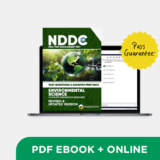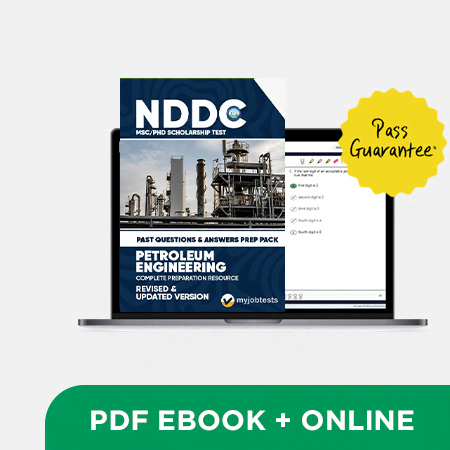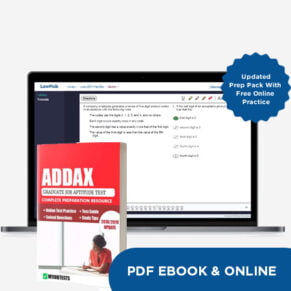- Your bag is empty
- Continue shopping
Bookstore
NDDC Scholarship Past Questions And Answers for Petroleum Engineering
Original price was: $50.$39Current price is: $39.
Up-to-date / Real NDDC Scholarship Petroleum Engineering Test Past Questions and Answer will help you prepare faster and smarter for the NDDC Scholarship. Got shortlisted with few days or hours left to prepare? this pack will give you the insight you need to ace the tests and improve your chance of passing the test.
Looking for a Different Course? Check all NDDC Past Questions Here –>
NDDC Scholarship Past Questions And Answers for Petroleum Engineering
Download the NDDC Scholarship Petroleum Engineering Test Past Questions Practice Pack from this page in PDF format. The NDDC Scholarship test past questions pack makes your preparation easier and much better. Featuring questions from previous assessments as well as solutions to these questions.
About NDDC Nigeria
The Niger Delta Development Commission is a federal government agency established by Nigerian president Olusegun Obasanjo in the year 2000 with the sole mandate of developing the oil-rich Niger Delta region of Nigeria.
About The NDDC Scholarship
- The Niger Delta Development Commission (NDDC) Scholarship is a program initiated by the Nigerian government to provide educational opportunities for students from the Niger Delta region. The Niger Delta region is known for its significant oil and gas reserves, but it has also faced numerous socio-economic challenges. One of the ways the government aims to address these challenges is by offering scholarships to qualified students from the region to pursue higher education overseas.
- The amount for the foreign scholarship shall be based on the prevailing exchange rate of the Naira.Current Application Closing Date is 3rd November, 2023.
Application Procedure
- 1.The following documents must be attached to the application:
2.Recent passport photograph
3.Local Government Identification Letter
4.Post Graduate admission letter from a recognized overseas university
Relevant degrees from recognized universities
5.NYSC Discharge/Exemption Certificate
6.Upon successful completion of the application form, a registration number will be automatically assigned.
7.Applicants are advised to print a hard copy of the online-generated acknowledgment for future reference.
8.All shortlisted applicants will be announced and posted on the NDDC website: www.NDDC.gov.ng. These shortlisted candidates will subsequently be required to take part in a Computer-Based Test (CBT). Eligibility
To be eligible for the scholarship, a scholar must hail from the Niger Delta Region and have achieved a First Class Degree, Second Class Upper, or Lower Division.
The Selection Process
- 1. Initial Application: Interested candidates must submit an online application via the Commission’s Website.
2. Preliminary Shortlisting: Candidates will be shortlisted based on the following criteria:
WASSCE/NECO results
3. Undergraduate Degree classification (1st Class, Second Class Upper/Lower)
4. Local Government Identification
5. Computer-Based Test: Shortlisted candidates will undergo a computer-based test conducted by our consultants in Rivers State.
6. Minimum Test Score: Candidates must achieve a minimum score of 70% in the test to proceed to the next stage.
7. Further Shortlisting: Candidates who successfully pass the test will be further shortlisted.
8. Final Verification: The final verification of the candidates will be done through the Local Government Area (LGA) and Community Development Committee (CDC).
About the NDDC Scholarship test format
NDDC overseas scholarship test was conducted by Cinfores-Ltd, between 2010 and 2015. Since 2016, the tests are now conducted by MEIL (MARG Educational International Limited).
The test usually comprises of 2 sections –
1. General questions which everyone will have to sit, and
2. Discipline-based questions.
For example, candidates in Engineering and Science related disciplines could take a mix of science-based questions like maths, English, physics and chemistry for part 1, then discipline-specific questions for part 2. The test usually last between 30 to 60 minutes.
Sample Past Questions And Answers for NDDC Scholarship – Petroleum Engineering
- Question1: What is the primary function of a drilling mud in petroleum drilling operations?
A Cooling the drill bit
B Lubricating the drill string
C Controlling formation pressure
D Sealing the wellbore
Answer: C Controlling formation pressure - Question2: In petroleum reservoir engineering, what is the term for the maximum volume of hydrocarbons that a reservoir can produce?
A Original oil in place (OOIP)
B Proven reserves
C Reservoir porosity
D Cap rock
Answer: A Original oil in place (OOIP) - Question3: Which method is commonly used for enhanced oil recovery (EOR) to improve the sweep efficiency of reservoir fluids?
A Hydraulic fracturing
B Steam injection
C Horizontal drilling
D Well logging
Answer: B Steam injection - Question4: What does the term “API gravity” measure in the context of petroleum engineering?
A Viscosity of crude oil
B Gas-to-oil ratio
C Density of crude oil
D Reservoir pressure
Answer: C Density of crude oil - Question5: What is the primary function of a Christmas tree in offshore petroleum production?
A Extracting natural gas
B Separating oil and water
C Controlling wellhead operations
D Measuring reservoir pressure
Answer: C Controlling wellhead operationsQuestion6: Which drilling method is used to create a wellbore by melting rock using a high-temperature plasma arc?
A Rotary drilling
B Directional drilling
C Plasma drilling
D Percussion drilling
Answer: C Plasma drillingQuestion7: In reservoir engineering, what is the purpose of a wellbore skin factor?
A To estimate oil reserves
B To measure well productivity
C To account for near-wellbore damage
D To predict reservoir pressure
Answer: C To account for near-wellbore damageQuestion8: Which process involves the separation of natural gas liquids (NGLs) from raw natural gas?
A Fractionation
B Gas sweetening
C Acidizing
D Steam injection
Answer: A FractionationQuestion9: What is the primary role of a subsea manifold in offshore oil and gas production?
A Separating oil and gas
B Drilling wellbores
C Distributing and controlling fluid flow
D Measuring reservoir temperature
Answer: C Distributing and controlling fluid flowQuestion10: Which drilling technique is used to create a borehole that deviates from the vertical direction?
A Directional drilling
B Percussion drilling
C Rotary drilling
D Plasma drilling
Answer: A Directional drillingQuestion11: What is the primary function of a blowout preventer (BOP) in drilling operations?
A Drilling fluid filtration
B Wellbore strengthening
C Well control and safety
D Reservoir pressure measurement
Answer: C Well control and safetyQuestion12: Which method is commonly used to measure the porosity of rock formations in petroleum reservoirs?
A Seismic survey
B Well logging
C Core analysis
D Gravitational settling
Answer: C Core analysisQuestion13: In the context of petroleum geology, what does the term “source rock” refer to?
A A rock formation with high permeability
B A rock that traps hydrocarbons
C A rock that generates and releases hydrocarbons
D A rock that contains large amounts of natural gas
Answer: C A rock that generates and releases hydrocarbonsQuestion14: Which technique is used to estimate the reserves of unconventional hydrocarbons like shale gas and tight oil?
A Well logging
B Pressure transient analysis
C Reservoir simulation
D Resource play analysis
Answer: D Resource play analysisQuestion15: What is the primary purpose of a packer in well completion?
A To reduce wellhead pressure
B To isolate different zones in the wellbore
C To control reservoir temperature
D To measure fluid density
Answer: B To isolate different zones in the wellboreQuestion16: What is the primary objective of hydraulic fracturing (fracking) in unconventional reservoirs?
A Increasing reservoir permeability
B Reducing wellhead pressure
C Enhancing wellbore stability
D Controlling gas-to-oil ratio
Answer: A Increasing reservoir permeabilityQuestion17: Which method is commonly used for well stimulation by injecting acid to dissolve rock formations?
A Perforation
B Hydraulic fracturing
C Acidizing
D Steam injection
Answer: C AcidizingQuestion18: What is the primary function of a downhole pump in artificial lift systems for oil wells?
A Separating gas and oil
B Lifting fluids to the surface
C Measuring reservoir temperature
D Controlling wellhead pressure
Answer: B Lifting fluids to the surfaceQuestion19: In petroleum economics, what does the term “Net Present Value (NPV)” represent?
A The current market price of crude oil
B The total reserves of a reservoir
C The profitability of an investment over time
D The production rate of a well
Answer: C The profitability of an investment over timeQuestion20: What is the primary objective of well testing in petroleum engineering?
A Determining reservoir pressure
B Measuring wellhead temperature
C Estimating oil viscosity
D Evaluating well performance and productivity
Answer: D Evaluating well performance and productivity
| Select Option | Get eBook, Get eBook+Online Practice, Get Online Practice |
|---|









Customer reviews
Reviews
There are no reviews yet.
Write a customer review